Should Children’s Films be Dark or Light?
It is a common concern among modern parents that what their kids watch, read, and occupy their time with should be appropriate for their current age. They should not partake in media which is too violent, too sexually suggestive, or even too cynical and insulting, depending on what is said, done, or laughed at within the media itself. It often doesn’t even matter if there is a storytelling purpose for the content included. If the parents don’t approve of their children hearing or seeing certain things, then they will keep them from it however they see fit.
An aspect of this issue that often comes up is the seriousness or “darkness” of children’s films. Should they include violence, or should they not? Should they include blood, or should they not? Is it morally right to feature a character being threatened, and even physically hurt, when the only reason it happens is to affect the emotions of the audience in a particular way: to tell a story which presents harsh realities and issues within our human condition, in order to highlight something more important than just how dark the world can be? But perhaps the most important question is: will children even be able to understand it all?
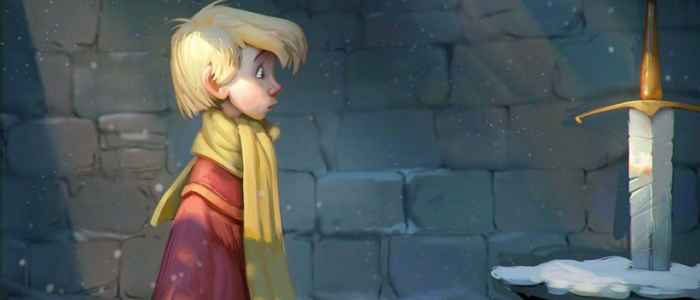
For the rest of this article, there is one fact which must be made clear before we continue. When the word “children” or “child” is used, it is intended to mean an age which is older than a toddler, but that is slightly younger than a tween: meaning roughly eight to ten years old. Because by the age of nine–which is around fourth grade in educational terms–children naturally begin to comprehend a lot of mature concepts. By then they may have lost a grandparent, or a pet. By then they may have had their first crush. By then they’re reading 400 page novels. Many have even been given “the talk.” So if by this critical age many already know so much, why should they be sheltered from similar things in their films and TV shows?
Children all grow up eventually. Some day they’re going to have a job they might get fired from. Some day they’re going to have a relationship which might end in disaster. Some day they’re going to drive a car that could crash into another. Some day they may even break a leg or lose an arm. Some day all of these things could happen to them and more. So when will it become the proper time to tell them about these things? When and how should they learn about them? It’s never an easy thing to teach kids about life, loss, and relationships, and it’s never easy to know when it’s most appropriate.
However, stories have been around almost forever. Film and Animation are the newest incarnations of this pastime, and they’ve been doing quite a good job of explaining what life can be like, the hazards one might encounter–physically and emotionally–and even how to avoid them, through the use of morals and metaphors. Yet the question remains: can stories carry these messages across without scaring or bringing a child to tears, or is it possible that stories cannot do their job as effectively if they do not employ the right amount of atmosphere, the right amount of tension, and a healthy dose of darkness?
The Dichotomy of Early Disney Films
It has largely been forgotten in the modern age, that in the beginning, almost all animation (even television animation) was not intended just for kids, it was largely marketed and designed for adults. Mickey Mouse, Felix the Cat, Bugs Bunny, Woody Woodpecker, Popeye the Sailor Man, and Betty Boop especially, were all created with adult audiences in mind, and the cartoons they came in were played before longer feature films as a common practice. Whether the kids enjoyed these cartoons or not was of secondary importance. It was of course Walt Disney who first expressed an interest in making cartoons and cartoon features which would be accessible to the whole family, and would keep every member of that family equally engaged. Looking back at his filmography, it is decidedly evident that some of Disney’s features such as Snow White, Fantasia, Pinocchio, Bambi, Lady and the Tramp, and Sleeping Beauty, had plenty of mature adult themes, and even imagery, alongside the more colorful and non-intrusive characters and environments.
Snow White had adorable cartoon forest animals cheerily cleaning up dishes and sweeping floors. But it also had an evil queen who used chemicals and magic to horrifically transform herself into a witch-like crone with a bone-chilling cackle.
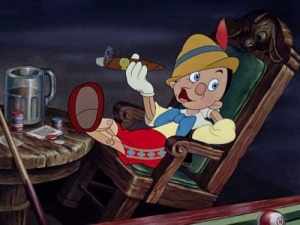
Pinocchio had a wall full of charming music boxes and clocks, a singing dancing cricket, and a beautiful blue fairy. But it also had tricksters, con-artists, kidnapping, slavery, beer, cigars, and one of the most sobering examples of metaphorical storytelling in the history of entertainment.
Bambi was a lot lighter on the questionable elements like addictive substances and witchcraft. However, its single act of murder regarding Bambi’s mother was enough to make it clear that life can’t always be a lovely romp through the woods, no matter how much they try to put it out of our minds with a pretty little ditty soon after.
Despite being rendered in animation, the Disney films were some of the grimmest and strangest of the time, even when compared to their live-action contemporaries, and many of their most notable scenes are hard to forget.
So, were all of these things wrong for children to watch? Should parents have sheltered their kids from such material?
Fragile Young Minds
One could argue in any instance that each child is different; ergo, not all children are going to be able to handle the same things, and certainly not in the same ways. Some children might find violence particularly disturbing, while others only mildly because they understand that it’s simulated on a movie screen. Some children might also find death distressing, because they associate it directly with someone in their own family or group of friends who has passed. So any depiction of death and loss, or even potential death–where a character has fallen gravely ill–could cause an intense emotional reaction. Still other children could be scared of monsters, ghouls, and the Boogieman, and anything remotely resembling what they envision these creatures to be on film could adversely affect them for days or weeks afterwards, because they think these things are hiding in the dark spaces of their room.
Although, again, not all children are going to have these reactions. Any parent at one time or another could automatically assume that their child could be traumatized by disturbing imagery or acts of violence. Most parents these days would rather not see their kids witness the spoils of debauchery, as can clearly be seen in Pinocchio. But until one can say for certain whether or not their child has shown a negative response to certain images or stimuli, there’s less reason to assume that they cannot handle a film or two that features more serious elements and dramatic turns; especially when it is a film made with them as the target audience.
On top of this, many children of the early 1900s (up to the end of World War II: 1945) had incredibly bleak and demanding lives compared to lower and middle-class families of today.
Kids worked in mines, dangerous factory floors, hazardous steel mills. They handled and operated heavy industrial equipment, which all too often claimed life and limb. People used their kids as a labor-force to help till the fields of vast farm-lands. But even when it wasn’t all of that, homes required more upkeep, people had bigger yards with more chores and responsibilities, kids picked up jobs at younger ages even after the Child Labor laws were put in place after The Great Depression. You were even allowed to walk 5 miles down the road, by yourself, just to go to the drug store for some candy; and no one worried a thing about you, because you were just a kid. There wasn’t a lot of child psychology done in those days. People generally didn’t care about what kids knew or understood. The sooner they sucked it up and had their nose shoved right into life’s responsibilities, the better. On top of this, death was also a common fact of life. There were so many untreatable diseases, infant deaths, casualties of war, death from loss of limbs, death from accidents, and so on and so forth. Seeing bleak deaths depicted in films and other media just wasn’t so strange or obviously emotionally harmful, even to the kids.
So in those days, while the Disney features are some of the more serious and emotionally striking films of the age, they might well have been far easier to stomach than anything kids had actually been through themselves. Even after World War II–when the later Disney films were made–those days were still fresh in people’s minds. As long as the movies were a form of escapism, and perhaps especially since the Disney films always had a happy ending, they were the best things a child could see at the cinema. Because not only were they uplifting, but they were extremely well crafted, and took years of hard work to make–as opposed to the cookie-cutter Hollywood assembly line films they could have been watching instead.
The Shifting Times
Walt Disney had an incredible knack for getting to the heart of a story, and figuring out just what was necessary thematically and plot-wise to translate the emotions and the morals within that story to his audience. But by the time Walt died, his hand was no longer in the development of his animated projects as deep as it had been in the past. He was managing a multi-million dollar company by the late 1950s, complete with two television programs which he hosted, a new theme park and another on the way, and plenty of live-action films to keep a busy but rewarding schedule. More pressure was then put on his favorite group of animators, his “Nine Old Men” as he called them, to pen the scripts and build the characters which would occupy their upcoming cinematic projects. But despite their best efforts, as a result of Walt’s death, the Disney feature films and their characters slowly became homogenized. By the early 1970s their story-lines were smaller scale, their predicaments were not as dire or bleak, and their themes were not nearly as powerful or morally based.
On the audience side, due to the emergence of the television (meaning less theater attendance), and the conveniences of the modern 1960s life, parents, it seems, became more protective of their children and their entertainment. The trends in popular media were steering away from the more literary and philosophical stories with gritty tales of magic and monsters, to the more quirky, bubbly content of pop-music, sit-coms, and a growing interest in education. There was now an expectation to be more prim and proper, to live in nice suburban houses, and live the “All American” way, even in the wake of the independent teenage culture that had begun to grow in the fifties. Even the Disney company got on the band-wagon when they began producing hour-long TV programs, featuring characters like Ludwig Von Drake, who would teach children about the wonders of color, the atom, and the history of music. Never a dull moment and often a delight, but these cultural shifts clearly took a toll on their flag-ship content.
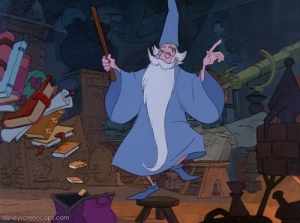
To bring up some films as examples, The Sword in the Stone (1963) is highly enjoyable, and features a delightful cast of characters, but at its heart, it’s a comedy. The Many Adventures of Winnie the Pooh (1966-1977) has a few light scares and a scene of fear and loneliness, but it is also mostly a comedy. The Jungle Book (1967) is chiefly a story about childhood angst, but its single scene of deep emotion is cheapened by revealing that Baloo did not in fact die–unlike Bambi’s mother or Simba’s father–even though Baloo was clearly a “father figure.” The AristoCats (1970): once again, another comedy. Robin Hood (1973) was special, in that it changed things up by having an emotionally unstable villain, scenes of sadness and hopelessness, and an anxiously thrilling climax where it almost looks like Robin perished in the flames. But even it fell to the trope of being a tad more hammy and “scenery chewing” (overly dramatic), rather than trying to be scary or intimidating in any fashion.
All of these films had “dramatic moments,” or a scene where characters dealt with sad emotions, but nothing nearly as heart-wrenching or hair-raising as had come before.
The seventies would prove to be no kinder. Most commonly it became known as the “Dark Age” of animation, not only due to the far smaller box office draw the Disney films had, but because animation became weaker, simpler, and perhaps more experimental. You still had a few things like The Phantom Tollbooth, The Rankin/Bass Christmas films, The Point, and all of the Peanuts specials, including my favorite, Race for Your Life, Charlie Brown. But animation had also made its way into the X-rated cinemas with films like Fritz the Cat, Heavy Traffic, and Down and Dirty Duck. It wasn’t quite until Star Wars came out that all film, including animation, would be seeing a rejuvenating revival.
With the 1980s came a new wave of imaginative ideas: a new appreciation for filmmaking, for music, for horror movies (especially slasher flicks), and for magic. The world of fantasy would see a rebirth here, and Disney animator Don Bluth knew that he could bring something back to the silver screen that he felt the Disney Company had somehow lost during the Dark Age of the late sixties and seventies. So after working tirelessly with a moonlighting crew of other animators on his first short, Banjo the Woodpile Cat, Don got the rights to produce a feature-length adaptation of “Mrs. Frisby and the Rats of NIMH” (later renamed The Secret of NIMH), and sought to bring feature animation back to its roots: harking back to the high-quality character animation of Bambi, the delicately crafted artistry of Pinocchio, and the emotional maturity of Lady and the Tramp.
The Merits of Darkness
After having worked on Sleeping Beauty–one of the last “high-art” animated films of the last century–Don Bluth went on to animate characters for Robin Hood, The Rescuers, The Fox and the Hound, and he directed the animation on Pete’s Dragon: all films which, to Don, had become simplistic, watered down, and far less magical than the films he had hoped he would get to work on when he joined the Disney Studios back in the mid-sixties.
Now these features are surely nothing wrong to show to children. In fact, even the worst of the Disney features from the twentieth century are better entertainment than some of our most popular today. But it is conceivable, that if you put a child in front of a film that allows them to think, allows them to feel, and asks them to empathize with the characters on screen, it changes them inside: it affects them in a meaningful way, even if they don’t like how it makes them feel at that moment. Certain films for a growing child are experiences that cannot be found anywhere else, and some may define who they are when they reach adult-hood. Perhaps this was not entirely on Don Bluth’s agenda. Then again, maybe it was. None-the-less, Don Bluth is responsible for writing and directing some of the most impactful, honest, emotionally riveting, and perhaps most grim animated features ever made for a family audience.
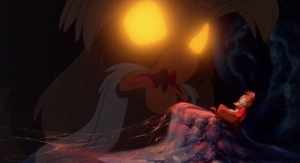
The Secret of NIMH is notable for its widowed middle-aged female protagonist (a virtual rarity even in live-action film), its violent death of the villain by literal back-stabbing, and its dark Lovecraftian design with regards to the history and the realm of the Rats of NIMH.
An American Tail is notable for its shocking opening scene of destruction, its bleak depiction of loss, loneliness, and fear with regards to Fievel, and its decidedly disturbing atmosphere with regards to New York’s underbelly with Warren T. Rat, his dastardly cohorts, and any of the other unhelpful citizens who turn a blind eye to this lost and scared child.
The Land Before Time is notable for its early death scene (far more tragic than even Bambi’s mother’s death), its tale of a group of children traversing deserts and scaling mountains in order to find their families again, and its suspenseful scenes of danger involving a monstrous T-Rex that threatens to kill the young dinosaurs at every turn.
However, one thing that all three of these films have in common is an incredibly satisfying climax and resolution, that could not be more cheerfully melancholy if you placed a picture of a sad puppy next to the movie screen.
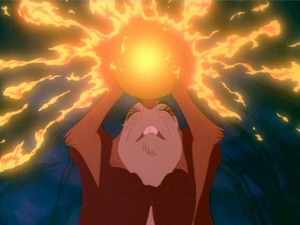
Mrs. Brisby saves her children through the power of a stone and the strength of her will, Fievel finds his family through his boundless hope and the strength of his determination, and Littlefoot and his friends find the Great Valley and their families through the trust of his mother’s spirit, and the bond of their friendship.
So should children not be allowed to see such amazing films? Are these films made in error because of their bleak and sometimes disturbing content, despite their good endings?
There is only one case on record, which could easily be argued was made in complete error despite good intentions. That case being Ralph Bakshi’s Wizards, a film which he constantly claims on the DVD’s commentary track was made as a “family picture:” despite his usual tropes of angry violent characters with guns, brutal bloody battles, sexual innuendos, scantily-clad females, and a drab and gritty landscape. Not at all a suitable film for young children.
Yet, the films of Don Bluth are different. They all have an eerie haunted energy to them, but are not so dreary or mature as to include hateful or foul language, or grating cynicism. There have also been other films even beyond Bluth’s, which not only took many risks with content, but have done similar wonders in designing films that were not only serious in tone and narrative, but were long lasting in the minds of young children who saw them back in the day.
Darkness Beyond Bluth’s
Take for instance Once Upon A Forest. That film had your typical strong environmental message about pollution and caring for wild animals and their environment. But it also told a harrowing tale about three young rodents (“furlings”) who traveled across forests and meadows to seek out some special herbs they needed in order to save their younger badger friend from certain death. It’s definitely a bit softer on the edges than a Don Bluth feature, but not by much.
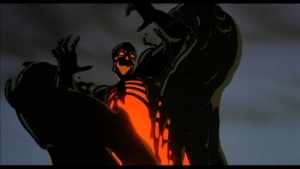
Ferngully is another; although it came a lot later than the rest. Its most disturbing factor was of course Hexxus; who not only had a sexualized song all about the wonders of slime and sludge (makes one’s skin crawl just thinking about it), but he metamorphosed into a demonic creature with a tar-covered skull and a glowing molten interior, for no other reason than to scare the life out of the audience, and scar kids for life. Was this perhaps too much for kids? It certainly makes a better case. But there doesn’t seem to have been much report of these images coming back to haunt people decades later.
The biggest of these dark children’s features, however, is the cult-classic of 1987, which almost won the grand prize for best feature film at the Sundance Film Festival of 1988. It was a Disney produced film, and had originally been drafted and story-boarded by then short-lived Disney animator, John Lasseter. This film was The Brave Little Toaster.
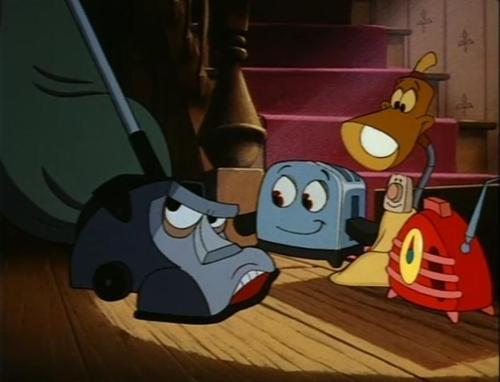
Toaster should go down in history as one of the most profound films (let alone animated films) that a person can ever watch. Not only is the story of five hopeless (and sentient) home appliances, journeying across the country side to find their owner, a beautifully emotional thing to witness: but the film is punctuated by deeply affecting scenes of near-death experiences, horrifying nightmares, sadistic repair-shop owners, murderous electronics and garbage magnets, and a truly shocking and terrifying climax that could leave you anxious for days. But once again, is it safe for children? Will it scar them to realize that the world isn’t all fun and laughter and good times? Will it be better for them to see this rather than something emotionally easier on their minds?
Honestly, it all depends on what one thinks is most important for their child to see and to know in order to grow up best.
There is no doubt that the stories, struggles, and the emotional turmoil of fictional characters (especially animated ones) have affected millions of people in a palpable and meaningful way. These films have the power to open one’s eyes to things and feelings that one would not otherwise have an appreciation for. It is far more rewarding to learn and to understand what it means to feel empathy for something or someone–to cry when they are hurt, to feel scared when they are lost, to feel hope when they find food, and to know joy when they reach home–than to sit down to another bargain-bin story about following your dreams and standing up for what’s right, with a third-rate villain who doesn’t even draw blood when they make their threats.
As a great young Hobbit once told his best friend on their harrowing journey to Mordor:
“It’s like in the great stories Mr. Frodo, the ones that really mattered. Full of darkness and danger they were, and sometimes you didn’t want to know the end because how could the end be happy? How could the world go back to the way it was when so much bad had happened? But in the end it’s only a passing thing this shadow, even darkness must pass. A new day will come, and when the sun shines it’ll shine out the clearer. Those were the stories that stayed with you, that meant something even if you were too small to understand why.” –J. R. R. Tolkien
For a good while, Walt Disney and Don Bluth were really not so different. Both of their filmographies touched us on a hardened level that intended to draw real raw emotion from us–not the least due to their grim and Gothic imagery–because they both wanted to bring us something better than what they themselves saw in the cinemas. Something new, but something timeless. Something scary, but something wonderful. To tell of good deeds, righteous acts, and self sacrifices. To tell harrowing tales of princesses, warriors, monsters, mice, and magic. To show us the dark as well as the light, because there can be no appreciation of one without the other.
Kids can surely handle more than we give them credit for, and it seems that Don Bluth, and Walt Disney knew that. It simply remains up to the parents to make the discerning choice of whether or not their child is capable of accepting what they see in the cinema, or at home, and learning from it in a healthy and maturing way.
The world of animation has changed a lot since the seventies and eighties. Animated films are more about the gags and jokes like they once were in the 60s. They have moved away from the serious, richer story lines, and have chosen to give people thrills of emotional highs rather than real, honest lows. For a short time, we had it pop up again in the nineties, with the release of Pocahontas, The Hunchback of Notre Dame, and Tarzan. However, more recently–with the release of films like Coraline, The Boxtrolls, Inside Out, and How to Train Your Dragon 2–there is evidence that the world of animation is returning to that more serious place; where we can trust our kids to understand and comprehend complex emotions and character interactions, rather than just sugar coating everything.
It’s only a matter of time before more writers, filmmakers, and storytellers decide to bring kids stronger, more challenging, and more honest cinematic content. In the meantime, I hear television is doing a pretty bang up job already.
Steven Universe and Gravity Falls anyone?
What do you think? Leave a comment.
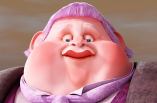
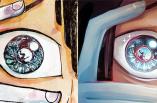
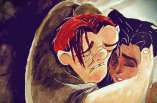

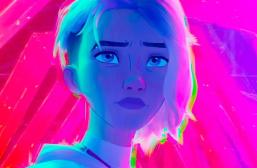
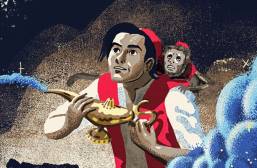
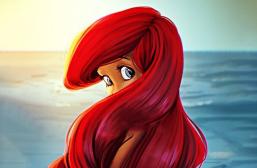
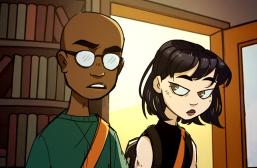
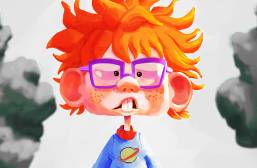
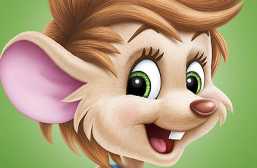
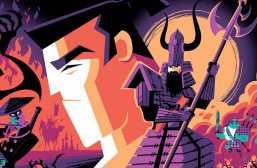
Pinocchio is so seriously dark, I am shocked at the brutal honesty of it. You explain the thinking behind these dark films of the past very honestly and it does seem like we are returning to the days where children are being trusted to be able to handle these dark elements more without worry. I know I handled Pinocchio, even if it did practically scare me into being a good boy.
I’m surprised you didn’t mention Frankenweenie or any Tim Burton film. Coraline is pretty good but what about Nightmare Before Christmas? Things in that movie could be pretty creepy. Anyways, good article. Enjoyed the read.
Thank you for the comment. I’ve contemplated on this topic for years, so I was excited to discuss it in more detail here.
I personally have not seen “Frankenweenie,” and I’m not sure if I ever will. It’s premise and style didn’t really draw me to the theater as “Coraline” or “The Boxtrolls” did.
The original focus of this discussion was over Don Bluth and Disney, so my examples never went much beyond them. I could have mentioned “Nightmare Before Christmas,” although I personally feel that Nightmare is mostly dark in imagery, not dark in mood or atmosphere. There’s a difference between things that disturb us visually, and things that build up anxiety and uneasiness due to pacing, colors, emotions, and music. So if I would have put one of those stopmotion films here, it likely would have been either “James and the Giant Peach” or “Coraline.” “Nightmare” is far lighter-hearted and easier to watch by comparison, especially because of its lively musical numbers. It also has an endearing cast of characters and one very particular ear-worm type opening theme, which is why it has lasted so long in the public consciousness, while something like “Corpse Bride” hasn’t quite made the same mark.
I didn’t encounter these animations until much later in life. So, I have no idea what the little kid version of myself would have thought.
I think some of these animations captured certain elements of being a child very well–elements of childhood that are not typically expressed in film.
Childhood is often portrayed as a cute, happy, innocent time in life, but the picture that some of my favorite films paint is much more realistic: life is not always pleasant or what you want it to be.
I agree, though I do believe a film’s tone has to be set right depending on its narrative.
I can definitely appreciate a film’s honesty.
Children films should be light… not because it’s inappropriate but because it’s like trying to feed them something like liver pate when they thought they were going to get pizza.
I am eternally impressed with Hunchback and what a bold film it was for Disney. There’s a great story about when the directors had to pitch the Hellfire sequence to the executives, they had already armed themselves with arguments and justifications (using Fantasia as an example) as to why it wasn’t “too dark” and was necessary. So they showed the sequence and the execs simply said “ok, great”. No further discussion was necessary. I will always applaud the risks they took with that film.
I was at the world premier in New Orleans for the Hunchback and can still remember being stunned by the intensity of the Hell fire scene. Frollo is the most vile Disney villain ever. I thought the movie was under-appreciated. Fortunately that scene went right over my 4 year old’s naive head.
Animation is getting so metal!
I think dark, violent children’s films should be their own genre. I literally grew up on Secret of NIMH and I just got to say it, that movie was fucking badass.
Woah, I remember watching this movie many a time as a child. The scene where the vacuum cleaner sucks up his own electrical power cord gave me nightmares.
Terrifying movie, but somehow I convinced my parents to rent it from the VHS section of Shop’n’Save at least twice a year.
My favorite Don Bluth film (though me may have only produced this one) is Anastasia; a darker version of the Disney priness genre which launched a love for Russian history in my life at age 9. Nothing wrong with a little darkness.
Hunchback is also my favorite Disney movie follwed by Beauty and the Beast which many, many commentators found to be too dark and dangerous for children.
I guess the real trouble time for Disney was the Nine Old Men era.
Great article. Im so glad to see all of your hard work pay off!
Actually, Don’s team did animate “Anastasia,” and he directed it with Gary Goldman, just like his others.
The character designs and storyboards for the film are part of the Don Bluth animation collection at the Savannah College of Art and Design: where I graduated from school this year. The design of the human characters is almost exactly the same shape and semi-realistic aesthetic that were seen briefly in “The Secret of NIMH,” more prominently in “Dragon’s Lair” and “Space Ace,” and then seen even more so in “Thumbelina.” The styles are quite consistent. The imagery of the underworld where Rasputin is imprisoned is also remarkably similar to a dream sequence seen in “Rock’a’doodle,” and the lair of the Rats of NIMH.
Also thank you so much for your critique and comments during the editing phase. It’s very reassuring to know that my writing is good enough now to be published here. =)
Great topic for an article. This is definitely an issue that needs to continuously be addressed. Great work!
Jonathan, I have been a long time follower of your work on DeviantART, so firstly, I would like to congratulate you on your first publication.
I feel that even if the film/show/etc is violent and or possibly scary, it should be able to be viewed by children so long as it is intended for younger viewing in the first place. Even if they are scared by what they are seeing, I believe it toughens them up and allows them to experience stronger emotional scenes from such an early age that it allows the child to understand the emotions that come along with them at an earlier part of their life, which could be important to their emotional growth.
Hi Dominick. Glad to see someone from one of my other venues check out my journalism.
Do you mind if I ask which pieces of my art you’ve liked the most, and how long you’ve been keeping up with it? I don’t think I have many cross over fans. lol
Secret of NIMH, An American Tale and The Land Before Time, though? Making children cry like that is just mean.
Brave Little Toaster epitomizes what good animation can do for the average child, like Iron Giant did….today’s Dreamworks crapola is disgusting to say the least, dumbing our kids down even more….
That movie really had some hot and cold animation moments; some parts were executed amazingly well while many other sequences are straight-to-dvd quality. I had thought the most disturbing part was the musical low where the “new” home appliances sing an amazingly annoying superiority song. But there’s a sequel that tops that sequence, featuring Carol Channing as a singing ceiling fan. Even my toddler felt that she was being punished.
I’m not letting my little sister watch anymore Disney movies. EVER!
Why not? The original fairy tales were realistically meant as morality tales, meant to scare the crap out of children into behaving because the world they lived in was generally awful. We don’t need to resort to that today, so it isn’t the end of the world that the movies have been softened up. Just have her read the real things when she’s old enough.
Make her watch movies like Frozen, Mulan, Brave, Up… stay away from the main-stream princess movies until she is old enough to understand not everything is about getting a prince and true love.
My campus once had a new TFA (Teach For America) teacher who showed Pocahontas to his 7th grade civics class as a “historical film”. I’m not sure that the state assessment covered talking trees and magic winds that make you speak in tongues…so…yeah…good luck kids!
Sadly, I grew up to “Disney in the classroom” teaching styles… The funny part is, I grew up going to Christian schools too. Many of these stories (including the Disney renditions) go against Christianity to an extent.
Disney is just creepy in general
The beauty of Disney, though, is that it’s creepiness and darkness is often very cleverly layered. Though Leitner cited things like the Evil Witch in Snow White, she was layered with supernatural powers, which makes her an entity children don’t necessarily have to see in their own world. They can dismiss her as a witch, something they only see on Halloween. When they are older, and ready, they can peel away those layers of distance at their own rate of emotional capacity to see the darkness that she represents in their everyday world. Giving them the material young in a carefully hidden manner sets them up to see it clearly in their own time and their own way.
I had a beautifully illustrated book of fairy tales when I was pretty young. Sleeping Beauty’s prince didn’t tell his mom he got married, she was pissed he got married. So when he went off to war, she schemed to kill and eat Sleeping Beauty and her kids. The chef kept on tricking her and hiding them in the barn (killing a lamb for the first kid, a calf for the second, a deer for the mom), until madre-in-law hears them laughing and the jig is up. She prepares a pit of vipers (!!!) and plans to throw all 3 in, until Prince comes back from the war. Prince’s mom then throws herself in the pit of vipers, the end, do you want a glass of water before bed?
Hunchback of the notre dame is my favorite disney movie, and I’m glad it’s not all bright and perky. I’m tired of that disney. If hunchback had to be all sugar and spice to be a popular movie, I wouldn’t have liked it as much. I like the way this movie turned out. “God help the outcasts” is hands down the best disney song, and I cried during it, something that I’ve never done while watching a disney movie (and trust me, I’ve watched a billion since birth). I like to think of it as disney’s misunderstood masterpiece. I don’t think I want it any other way. If it had become incredibly popular (on every t-shirt, every mug, every toy, every product ever) I might have hated it. That’s what happened to me with Frozen.
I have a very strong relationship with this movie too. I really enjoyed it as ten year old (I adored- and still adore- animation and i was so lucky to have grown up in the era with a new Disney movie every year), and then, in the summer when I turned 13 I became absolutely obsessed with it and watched it every day. I can’t say exactly why, but I’m sure the darkness helped- I had some darkness in my own life, but this was a magical kind of darkness as opposed to the disappointment of normal life.
There was no character I particularly identified with but I love trickster characters so I adored Clopin and his funny, catchy gallows humor song.
Esmeralda was so different from the normal Disney heroine- she was grown up, beautiful in a haunting way, and quick on her feet. I adored the intro, the animation, the architecture- the way they made Notre Dame SO BIG. There was this huge sense of mystery and dark magic. It was like stepping into another time and place.
In retrospect this movie was a tipping point in my adolescence when I began to lean towards darker themes and complexity. Looking back, I don’t have the same awe of the movie but I have a greater appreciation of it as an masterpiece of animation.
Yes, the movie is indeed one of Disney ‘s ever best, but I am not very fond of it because of the big diferrences between the Disney film and Victor Hugo book. Even as a kid (I was 4 or 5 years old when I first watched it)I found the plot extremely dark and Frollo’s obsession with Esmeralda creepy. A few months ago (a few days before my 13th birthday) I read the book and I loved it. Sure, it’s dark, but so were the Middle Ages mostly. And that’s what makes it so real. Plus, to those complaining about a Disney film being soooo dark and creepy: While I don’t think it’s not really suitable for younger kids, I think it’s a great way of showing the older kids that IN REAL LIFE just because someone is different (Quasi) people would be jerks to him and there are some nasty twisted real people (Frollo) who will want to wreck the lives of also different inoccent people (Esmeralda).
But I have to say that although I don’t like what disney did to Victor Hugo book, I have to give them credit for giving us such a adorable Quasi, a feminist Esmeralda (LOL), an interesting Phoebus (I like the Disney version, book Phoebus is an ass to pretty much everyone), a creepy Frollo (greatest villains ever, though the book Frollo was the #2 best character after Quasimodo- he only turns bad after Esme shows up) and a great Clopin (Disney version is more interesting than the book version, too!)
the lion king is heartbreaking when Mufasa dies. there has been many tears shed during this movie & again lots of ‘skipping’ over that part.
I’m 27 and I still have to fast forward the bit where Mufasa dies… bad times.
I like how most trailers nowadays led us to believe that we were in for light-hearted, rolicking, childhood-fun world of make believe, adventure, and lessons about growing up.
I’ve always wanted to read/write an article like this, and I think you did a great job!
I grew up with Disney movies and I have grown older, gone to college and learned the secret messages between movies and literature, It’s amazing what film makers can get away with. I don’t mean that in a negative light, not at all. But I find it amazing that these Disney films can be enjoyable for both children and adults. When re-watching some of my favorite disney classics, I wonder “How did I miss that as a child? I watched this?” when there is some joke or sexual reference I didn’t understand as a child. But as a child, I wasn’t looking for those things. I liked the songs even though I wasn’t 100% sure what they meant, and I enjoyed the romances between the characters.
That is something I’ll have to remember when I’m a parent. Children don’t see all of the immediate references that we adults do. Even if I am undermining children a bit and they do understand things more than I give them credit for (which is most likely the case, no doubt), I will still show them disney movies for the positive themes within the film, and trust my children to take the right information into their lives and to learn from the unhealthy ones. Like Ariel in The Little Mermaid. She goes after her dreams by taking risks and going after what she wants. But she also changes her appearance for a man. I want my child to learn to take risks to get what they want, especially later in their career lives, but not to completely trade everything, who they are, and what they look like to get something they want. Does that make sense?
I’ve always loved analyzing disney movies and their different interpretations. Thank you for giving me the opportunity to rant about this subject!
I must say that I agree with you whole-heartedly. I grew up watching Pinnochio, The Lion King, and other rich Disney films. As a child, I saw them very much as just stories being told. All stories had to have a villain, right? To my childlike mind, there was good and there was evil, and it was because the evil existed that good could win – ya know? Now that I’m in college, I can rewatch the films and appreciate the depth of them.
I think this author does a very good job of highlighting the necessity and benefit of emotional and thematic depth in children’s films, and the need for parents to recall their own experience with cinema growing up. It’s too easy to forget what it was like to be a child, and really, that memory is such a central part of deciding how to raise your own kids.
I feel like this article could be a prequel to Disney Parenting, how parents use disney movies to teach their kids lessons and to look at what’s actually happening vs what’s in plain sight. Oh. My. Gosh. We could totally write this.
That would be such an interesting topic to explore!! And it’s one that I’m very interested in, as Disney was my first love and parenting is something that (I hope) will be relevant in my life in the rapidly approaching future.
There were a lot of dark animated movies back then. Remember “An American Tale”? I’ll stop there. I’m depressed enough.
The Black Cauldron also scared the crap out of me. That’s the only thing I remember about it, actually.
I need to watch it again with my grown up literary mind. But… I’m scared to….
It’s not too bad. The Ralph Bakshi movies are far scarier by comparison. And I”m talking Lord of the Rings and Wizards specifically.
Great article. I don’t think I’m gonna watch Disney in the same way again…..
I’ve noticed Disney movies have gotten a lot darker of late. Look at The Princess and the Frog, the Voodoo “king” (?) makes a deal with demons to change one person into another, and gets dragged off to hell (presumably) when he can’t make good on the bargain.
Frolo metaphorically got thrown into Hell at the end of Hunchback though. And Ursula consorted with dark powers, their origin was just ambiguous. Maleficent was evil incarnate, so she apparently didn’t need to draw power from a third source.
Besides “Princess and the Frog,” which came out 7 years ago, when was the last time they got anywhere near as dark as their 90s films?
Bit it also teachest kids not to make deals with bad guys. Find the positives!
I used to be terrrifed of all these films, and I loved them! Also, i can categorically say they did not scar me. (Putting aside the recurrent nightmare about a veloceraptor…) I was such a wimp when I was young, yet now I would call myself very brave 🙂 I think the more children are exposed to in art, the less scared they are in real life.
Also, The Brave Little Toaster sounds like Toy Story!
If you haven’t seen “The Brave Little Toaster,” I am rather surprised you at least haven’t heard about what it is. Also yes, it is what you would call a precursor to Toy Story. Which is probably why director John Lasseter decided to make “Toy Story” in the first place, because he originally tried to pitch “Toaster” to Disney with some initial storyboards before he left the studio, and the film was handed off to Jerry Reese, who made it the film it is today.
Well I am English, many people here wouldn’t know about Charlie Brown if it weren’t for the many cult references. I wouldn’t be surprised if you didn’t know about The Snowman or The Clangers.
That’s true. “Toaster” doesn’t get around much outside of the US I don’t think.
I think it all depends on the individual child’s ability to separate fiction from reality.
I am very glad that you mentioned the resurrection of darker and deeper themes in contemporary animation. I recently saw Inside Out, and–at the age of twenty–it gave me a lot to think about. I know that my two nephews do not consciously seem aware of the themes within the movie, but, as an adult, Inside Out reminded me of my childhood while showing the difficulties of growing up without trivializing the process.
I believe another good example of animation with more mature themes would be Up.
I remember watching these movies but I don’t remember these dark themes – I supposed I blocked them out or didn’t understand them when I was young. I’ll have to go watch it again!
The darkest moment in children’s films for me probably came when Dorothy Gale is given electroshock therapy in the 1985 film Return To Oz. I’ll never trust Auntie Em again.
It would be very interesting to find out Disney itself planned something more messed up and then lightened it up.
He most certainly did. There is plenty of evidence in early script and story drafts that quite a few films had even darker imagery and scenes planned.
All children are different. They interpret and internalize differently. I think film helps children relate and cope. For example, if a child is having issues with their parents, perhaps they can relate to a step-mother fairy tale. Or feeling abandoned in Hansel and Gretel. Even watching the same story multiple times may spark different responses depending on what the child is working through in their life currently. And ultimately, I’d rather my child work out a fake scenario of all the bad things… than work through a real life bad scenario for the first time. And I’d definitely want them to start associating low feelings with ultimately ending in high feelings with great resolutions. Nothing worse than feeling like the lows will never resolve themselves…
About the dark jokes and concepts, kids don’t get it and they don’t care. Parents overeact.
I think we’ve found a much better balance in regards to capturing the essence of the characters.
I think at the end of the day, a movie’s purpose is to tell a story. And the filmmakers can do whatever they want with it. Most kids movies are lighthearted simply because kids can’t understand deep complex character motivations. They are perfectly content to watch a Minion dance around the screen. But there are some movies, like Inside Out, that aren’t afraid to get pretty serious in order to advance the story. I think it depends on what the movie is aiming for. Some appeal only to children. But others appeal to both little tykes and their parents as well.
But again, are we talking Toddlers, or are we talking 9, 10, and 11 year-olds. Because despite what some people think, there is a big difference in comprehension between age 4-6 and age 9, depending on the child of course. The sooner kids are exposed to slightly more complex stories and morals, hopefully the less likely they are to become ignorant or careless teenagers.
Also, “lighthearted” doesn’t have to mean a lack of deep character motivation. I mean, just look at television cartoons today. They aren’t as heavy as films, or as moody cinematically, but they do involve deeper emotional concepts because they know kids of a certain age can understand it, and even empathize with it. In fact, the main characters in shows like “Steven Universe”, “Gravity Falls,” and even “Hey Arnold” from back in the day, are 9-11 years old: and those kids always dealt with some pretty hard and heavy stuff every single episode.
I have never understood why there is such a huge rush to shelter children from the world. We as a society underestimate their intelligence level and their ability to comprehend and understand what is going on. Just because a film is being created for a young audience, does not mean it should cut out stories or certain characters so that children do not witness reality. But on the other hand, not all movies need to be geared this way. It is perfectly reasonable that a movie will not be dark because it simply was not a dark story. Sheltering only makes reality harder to accept later on.
This is article is truly relevant. It shows us the Disney history, how the animation movies are so different from each other through the decades, but how they are all touching in their own manner.
I completely agree with the author of the article when he says that through animation movies, the child should experiment fear, sadness, loss, but also hope and empathy.
Thus, I think that animation should be a little bit dark sometimes because this is an effective way to show life’s features to a child, through an animation movie which also shows a plenty of energy and joy.
People don’t really make lighthearted movies anymore. Everything has to be grimmer and darker these days. Seriously name how many kids films start with a tear-jerking death now (Finding Nemo, Up etc.) Even the Harry Potter movies got gritty by the end.
That’s not entirely true.
None of the “Despicable Me” movies have a main character death. The main three girls are orphans, sure, but we are never shown how and when they’re parents pass away. “Hotel Transylvania 2” wasn’t dark, but instead made fun of classic monsters. “Wreck-it Ralph” was emotional, but never dark. The “Spongebob Squarepants” sequel wasn’t dark. “The Lego Movie” wasn’t dark. “The Book of Life” involved death, but it handled it in a surprisingly uplifting way. “Mr. Peabody and Sherman” wasn’t dark at all, and no deaths. Same with “The Penguins of Madagascar.”
I would say it’s more half-and-half. Because both Disney’s “Frozen” and “Big Hero Six” involve a parental or sibling death in the opening minutes. Hiccup’s father dies in “How to Train Your Dragon 2.” “The Boxtrolls” was grim, but it’s implied death of Eggs’ father is flipped around when we see him alive at the end. Ghibli’s “When Marnie Was There” is riveting, emotional, and very mature, but it doesn’t touch on dark themes as much as it does internal conflict, the trials of being adopted, and teenage angst and personal self-consciousness.
I would say that the beautiful thing about today’s children and animated films in general is that they explore deeper feelings, personality issues, romantic concepts, and learning to be comfortable in your own skin than they do themes of death, finding your place in the world, and fulfilling your destiny. Things are getting much more honest and empathetic than idealistic I think.
Wreck-It Ralph had its main villain killed twice: the first time after trying to beat a child to death with a car antenna, and the latter time burning to death after fusing with a horrific insect.
There’s also scenes depicting what would happen if someone was stuck inside an unplugged cabinet, with Vanellope being pulled screaming into a void and blinked out of existence. With Sgt. Calhoun, the movie even briefly gets into realistic depictions of PTSD that show the difference between what looks overdramatic to players vs how intensely the characters themselves experience it, as well as showing how to accommodate such fears in the epilogue.
It may not be horribly graphic, but I’d rank all that as being darker than just the knowledge of a parent dying or general sad/downbeat content that isn’t really rare in all-ages media.
Fantastic article, loved your shout out to The Brave Little Toaster. It’s actually quite a deep and contemplative, at times rather dark, film upon re-watches and I’m glad you touched on that certain edge it has.
Two other films I’d recommend: ‘Watership Down’ and ‘The Great Mouse Detective’. The latter in particular carries many of the good old fun and sass of the Disney animated classics but when it gets dark, boy does it get dark.
I wrote a review of “The Brave Little Toaster” on my blog site, TheCinemaWarehouse. It was the first article I wrote that was lengthy and analytical, much like this one. So basically, that review I wrote is what led to me writing this one. Even the concepts I touch on here I started thinking about then about 3 years ago. So I’m glad you appreciated that.
I have yet to watch “Watership Down.” I’m actually a tad hesitant to, but I’ll get to it eventually. It might even play more authentically if I watch it on the old VHS I bought of it. lol
I really enjoyed reading this article. As I read through I kept wondering to myself if you had seen Inside Out yet (I’m glad you have, and that you credited How to Train Your Dragon 2, as well). I hope we are about to see a return to some of these more emotionally deep family films. A lot of the ones you mentioned as having darker themes are ones I can account for as being some of my or my friends favourite childhood movies: Pinnochio, Bambi, The Rescuers, Fox and the Hound, An American Tale, Once Upon a Forest, and The Brave Little Toaster. Same with the books I enjoyed when I was young, (The Velveteen Rabbit, The Phantom Tollbooth, Laura Ingalls Wilder, Anne of Green Gables, The Diary of Anne Frank, Slaughterhouse-Five) the things that stuck with me into adulthood contained mature themes that paralleled the reality I understood. Other things are forgettable.
A lot of parents bring their kids to these movies. If anything they’re not kid friendly enough at times.
Like I said in the article, depending on the child and the film, yes, you would be right. However, at the same time I would ask just how old are the kids in question? And secondly, I would ask if the parents decided to bring their kids because they “assumed” the film would be appropriate, or did they bring them knowing full well what their kids were in for? Because in all situations, the parents should know as much as possible what to expect in a film or tv show before hand, because that’s part of their duty as a parent.
Better to check the content and choose not to see it, then to see it and be angry at the filmmakers for making something that they personally think is not appropriate for children the same age as their own.
I feel like incorporating violence or ‘darkness’ in a children’s movie has to be rightfully justified, rather than just for the sake of it. It needs to compliment the overall plot and setting of the film and leave a significant impression on the audience, rather than leaving them feel grossed out of all the violence. This should apply to any medium of art, not just children’s movie.
We are in agreement there. My biggest issue, though, is that children’s movies choose to avoid violence more often then not, even though its inclusion at the right moment or under the right conditions “would” contribute greatly to the impactful quality of a film for the sake of the story, and not just for the sake of having violence in order to shock the audience.
I think all children’s films should possess both darkness, and also light. In life, you don’t have one without the other, and aren’t we trying to prepare our children for life? If we only have one and not the other, we are creating this fake world and alternate reality for our children in which they will believe everything is only always good, and nothing bad ever happens. Then when they experience the real world or go to school for the first time it will be like a smack in the face. I feel it is wrong for parents to try to shield their children from the truth. Our job as parents is not to protect our children from the world and reality, but to prepare them for the world, to help them stand strong when others are weak.
I was really excited to see this article because as a reader and film lover I was, from my earliest memories, drawn to stories that made me feel a wide range of emotions. As a parent of three young daughters, I have encouraged them to read and watch the books and films I loved as a child. So when Disney released Brave, I was excited to take my girls because it looked a little darker than other recent movies. Imagine my surprise when I over heard (and later read) immediate criticism of the climactic show down. How, they asked, were their children supposed to understand a father attacking a mother? Or the mother killing the other bear? It was too scary, too dark and too mature. My kids loved it. As my 9 year old told me just the other day “I couldn’t finish (the book she had been reading) I just didn’t care. Everything was okay all the time, and I didn’t care about what was happening because, obviously, everything would continue to be okay… I need to feel…dread.”
There should be a place out there online, where more children like your own can have their viewpoints and opinions on things like this posted by their parents in order to show others that children at that age are capable of not only understanding why a dark story is meaningful, but that they know they’d get something more out of a particular piece of media if it allowed itself to be more grim and dramatic compared to what it is.
When children actively want tension and drama in something they watch or read because it makes for a more gripping narrative, it’s a good sign they will grow up to be smart, thoughtful people.
Like a special forum for how children react to different media? That would be really fun actually, if you could somehow keep the parent bashing at bay. Maybe Reddit has something?
I think that children are drawn to “dark” things because they are so innocent and they want to explore situations and ideas that they don’t understand. In my experience, children do not ask questions they don’t want the answers to, and when they seek out a book or movie, they’re looking to explore specific ideas or situations. Children crave the taboo perhaps more than anyone else but they are also excellent at censoring themselves. If my kids find something too scary, they are capable of walking away from it. More often than not, they find things that are more mature or gratuitous uninteresting.
I’m not saying sit your child down to watch The Walking Dead, but I am saying that if your 9 year old wants to watch it, ask them to articulate why, watch it with them, and help them understand the themes that are inside it beyond violence because they absolutely can be sophisticated critics. In my children’s case, I think that watching the Avatar the Last Airbender series (they were 5 and 6) as a family and talking about it together really pushed them to articulate how they experience media and what makes it enjoyable, and that in turn made them more thoughtful consumers.
this is wow
I was just in a Children’s Literature class this past semester (not quite the same thing, but with similar principles) and I would definitely argue that children can take a lot more than we expect. That doesn’t mean I’m going to show my 5 year old nephew the Matrix or anything, but I do think that sheltering kids from all ‘adult’ themes may not help them in the long run.
I think you’re 100% right, kids need to learn about these darker themes in life, and it’s better to show them in ways you can encourage them to ask questions and to grow with you rather than having them exposed the hard way and not be prepared at all.
As a young boy, I remember curling under the covers of my parents bed and watching The Brave Little Toaster for about the fifteenth time that week. The movie touched me. I remember all the scenes like yesterday. The Air conditioner who basically committed suicide, the evil clown trying to throw Toaster into the bath tub to kill him, and Lampy plunging himself into the dead generator and then aiming his light bulb towards a lightning storm in a sacrifice to recharge the generator. I remember that film, and I like to think that it was those movies that really changed my perception of stories and quite possibly, the world.
There are scary things out there but to conquer it all, it just takes a little bravery. That’s why the movie was called The BRAVE Little Toaster.
I think animation is one of the most powerful art forms and I can definitely see it still influencing kids and adults alike.
I do think kids can handle so much more than we give them credit for. They are resilient and inquisitive. We raised two sons. They grew up with “The Chronicles of Narnia,” and “Lord of the Rings.” Dark and light, with parental guidance, is the stuff of life.
Great work with this article. I have always been a strong believer in being able to monitor what children are being exposed to. The more advance we become the more likely it is our children will be steps ahead of us. The question then is if it is a good thing or a bad thing.
First of all, great article. My biggest bone to pick is the use of the word “dark” throughout.
The word “dark” tends to have connotations of evil and negativity with it, but “dark” can also be used to reference non-white races. I’ve been working on using words other than “dark,” and it’s not easy. It’s very ingrained to use the word and not think about alternate meanings. Not only that, but “dark” is very vague.
Instead, words like “gruesome” or “eerie” may (or may not) work better in certain contexts. For example, “Watership Down” (one of my favorite books and films) is violent and bloody, as opposed to saying “Watership Down” is dark.
I agree that it isn’t the most effective term, or the most appropriate for various reasons. However, I chose to use it basically because it is the most commonly used term to describe grim, serious, or hauntingly mature media, especially in regards to films and TV shows intended for children, that on the outset seem far too bleak or scary.
I am also not worried that anyone will take my meaning of “dark” to mean anything related to race, as race or the ethnic origins of any characters within the films in this article are never addressed. This article strictly has to do with the narrative and the stories of different animated films.
I think in the future, though, I will actively choose to use different terms that describe this concept more accurately. So thank you.
“I am also not worried that anyone will take my meaning of “dark” to mean anything related to race, as race or the ethnic origins of any characters within the films in this article are never addressed. This article strictly has to do with the narrative and the stories of different animated films.”
I didn’t take it that way, so fear not. The concern is with the term being used without much thought, and perpetuating the usage of things considered “dark” along with things that are evil, violent, gruesome, etc, etc…
“I think in the future, though, I will actively choose to use different terms that describe this concept more accurately. So thank you.”
It’s not an easy adjustment to make. A professor of mine pointed it out recently, and I wasn’t even aware of it. But once you become aware, you definitely catch yourself wondering about which words you use.
Also, thank you for the receptive response and excellent article.
Of course. You are quite welcome.
Loved this article. It really got me thinking about a topic I hadn’t considered much before. Thanks for the wonderful thoughts !
Great article, really enjoyed it. I’d say yes we need some dark films, they incite the imagination – I know that when I was a kid, I loved dark films, T.V. shows, etc. I like to write horror so I’m sure that contributed greatly.
Good article. Recently, Disney has been moving away from making darker children’s films. Pixar, however, is excellent at incorporating ‘dark’ subject matters into their films while making them understandable and palatable to children. They do a great job of taking adult themes and presenting them to children as a normal part of life. Pixar doesn’t try to lighten up or sugarcoat difficult life lessons and I think that’s why so many adults and children respond so well to their movies. ‘Up’ has one of the most heart-rending openings of any movie let alone an animated children’s film, and the rest of the film is built upon themes of loss and loneliness. That’s just one example, but all of Pixar’s films are wonderful at frankly presenting the difficult truths of life that many parents might not know how to explain to their kids. For all the bright color palettes and wacky characters, Pixar’s movies are some of the darkest children’s movies being made today and I think that’s a wonderful thing.
As always, I am truly thankful for your the kind and appreciative comment. It’s very rewarding to see so many people sharing a similar viewpoint on an article that I put my heart into. However, I would like to stress something.
As someone expressed to me a few comments above, “dark” is not really an accurate term to describe what Pixar does. Nor does it ring true to say that Pixar is producing some of the darkest films being made today. That’s simply not reflective of their output.
It is more apt to say that they are producing some of the most honest, grounded, emotionally mature, and/or serious children’s films today. Don Bluth was “dark:” in a metaphorical, narrative, and visual sense. But Pixar rarely presents elements that are on the same level. They are close, but not quite all the way there. And it has been a very long time since any animated film dared to go as grim or mature as the late 90s Disney films had, which were the last great examples of this “dark” extreme.
I love how this article points out that life is not just sunshine and rainbows. It is entirely important in our lifetimes to understand that even the darkest of moments have a bright ending, and oftentimes various media outlets have the ability to show us that, and regardless of the manner in which we learn this, it is nevertheless an entirely important lesson.
Very glad you think so. Thank you so much.
You mentioned Steven Universe and Gravity Falls. I love both of these shows and were thinking about them as soon as I read your title. I do think that darkness in children’s cartoons can be beneficial for child development. However, I’d say that rather than dark, children’s media today are more honest. I think confronting reality is one of the best moves that children’s media has taken in recent years. Cartoons like SU, Gravity Falls, and even Adventure Time are doing excellent jobs balancing the elements of innocence and honesty.
That is all very true.
And I really didn’t mean to say that modern cartoons are necessarily dark, but more mature and honest and serious when dealing with different kinds of personal and social issues. Certain episodes or stories can be on the grimmer side, but that isn’t always the case.
Great article. I like that you brought up the point that in many cultures such as the United States, the modern concept of childhood and youthful innocence is much different than it was several decades ago. Some of my favorite animated movies as a child, such as Don Bluth’s Secrets of NIMH, All Dogs Go to Heaven, An American Tail, and The Land Before Time, had some extremely dark and harrowing moments. Meanwhile, older ones like Disney’s Pinocchio and Dimbo had some adult themes. Because many Disney movies are derived from fairy tales, it reminds me of the didactic nature of such stories and how they could be both brutal and meant for children.
Hi Jonathan, first of all thanks for your article! A very enriching read. Disney and Don Bluth’s films like ‘The Land Before Time’, ‘Anastasia’ and ‘Thumbelina’ were a huge part of my childhood and if I have kids one day, I’d love to share these films with them, so that they can fall in love with them too.
I very much agree with your message that children should be exposed to stories that are not just one-dimensional, but give the bigger picture of life and all its flaws. A lot of films these days are filled with cheap gags and terrible messages, and in comparison, the timelessness of 20th century children’s films was that it could be appreciated by all ages. So that when I’ve rewatched some films as an adult, things that I didn’t really pick up as a child could be noticed.
It was really important and I was very happy to see you quote Lord of the Rings and note that to fully appreciate good, we must also have the bad. That was one of loveliest messages that I got out of ‘Inside Out’ and it was great to see them produce a film that could help children understand emotions in a deeper and more complex way. I hope the success of films like ‘Inside Out’ sees a return to films for children that can show them ‘darker’ themes and realising that whilst bad things may happen, it is possible to overcome them.
Inside Out is definitely another recent children’s film with a darker tone. The film grapples with the feelings of depression and hopelessness that are familiar to folks like me who had to leave their childhood homes like Riley did. It is important for films to bring these childhood issues to the forefront.
I think you have a great point that back in the day when Disney was very dark (with films like Snow White and Pinocchio) people didn’t really think about how dark they were at the time because of how kids’ lives were at the time (scraping for food, working in mines) etc, and the reason why Disney became more lighthearted over time was due to a rapid change in home life and covenience, leading parents to shelter their kids more. I am glad you brought up The Secret of NIMH as an example of a truly dark and gritty kids film-it’s one of my favorites of all time and do believe it is a must-see for children at a certain age.
I feel that children should have a balance with the lighthearted and gritty as they are both crucial for shaping a child into a strong adult. They’ll be prepared for life with valuable lessons and maturity and with fond memories of the fun times. There are films that should be lighthearted and films that should be gritty and are meant to have just one tone or the other. I’m also a bit surprised you didn’t bring up Don Bluth’s philosophy-that “kids can handle anything as long as there’s a happy ending attached to it,” and I think he is right.
There are def. a few films I watched as a kid that were dark and gritty that either went over my head at the time or that genuinely terrified me. The Hunchback of Notre Dame was the latter as I was only 2-3 when it came out, and was one of my first exposures to a terrifying and realistic villain. Frollo’s animation and his actions-murdering people, lying, manipulating others, and lusting, along with his complicated personality, truly made me realize growing up that there are such evil people in this world. On the other hand, I saw the film All Dogs go to Heaven when I was about 5 and all of the dark themes went over my head. Watching that film again as a teenager I can see how much of an intense film it was-Charlie’s nightmare of going to hell and of course scenes of smoking, gambling, and drinking and Charlie dying just 5-10 minutes into the film.
I think you have a great point that back in the day when Disney was very dark (with films like Snow White and Pinocchio) people didn’t really think about how dark they were at the time because of how kids’ lives were at the time (scraping for food, working in mines) etc, and the reason why Disney became more lighthearted over time was due to a rapid change in home life and covenience, leading parents to shelter their kids more. I am glad you brought up The Secret of NIMH as an example of a truly dark and gritty kids film-it’s one of my favorites of all time and do believe it is a must-see for children at a certain age.
I feel that children should have a balance with the lighthearted and gritty as they are both crucial for shaping a child into a strong adult. They’ll be prepared for life with valuable lessons and maturity and with fond memories of the fun times. There are films that should be lighthearted and films that should be gritty and are meant to have just one tone or the other. I’m also a bit surprised you didn’t bring up Don Bluth’s philosophy-that “kids can handle anything as long as there’s a happy ending attached to it,” and I think he is right.
There are def. a few films I watched as a kid that were dark and gritty that either went over my head at the time or that genuinely terrified me. The Hunchback of Notre Dame was the latter as I was only 2-3 when it came out, and was one of my first exposures to a terrifying and realistic villain. Frollo’s animation and his actions-murdering people, lying, manipulating others, and lusting, along with his complicated personality, truly made me realize growing up that there are such evil people in this world. On the other hand, I saw the film All Dogs go to Heaven when I was about 5 and all of the dark themes went over my head. Watching that film again as a teenager I can see how much of an intense film it was-Charlie’s nightmare of going to hell and of course scenes of smoking, gambling, and drinking and Charlie dying just 5-10 minutes into the film.
Fantastic points being made and something that is constantly being debated in. North American society. Especially since society is falling into this bubble wrapped state where children are not getting the real world experiences or being exposed to situations that help create and further develop skills that are required to be a healthy and fully functioning adult.
Parents are beginning to protect their children from all aspects of real life scenarios. By “protecting” them from a safe way (film) of being exposed to some of the dangers of real life is only creating what will become a negative backlash for the child in the future.
Honestly, I think this is relative to what the child can handle.
Fair disclosure, I have not read the article yet and the following is more of an opinion. I believe that as of now, children are not (and may not ever) be ready for darker childrens films. I’m not saying make them completely censored, but I don’t believe that children’s shows should have anything that could be potentially scarring in them. Secret “Easter eggs” for older viewers could be alright, but children can be quite fragile.
What would happen if we started showing violent deaths and questionable motivations to young children? they have few set morals and what they see and experience in the world often becomes the mold for what they define as normal, right, wrong, and moral. I still remember my father showing me King Kong to me when I was about 7. I still remember some of those scenes and had more than one nightmare on the movie.
What happens to the future generation if we send them questionable ideals through the media? The most powerful outlet for sending messages in the world? I do not believe in complete censorship as that leads to its own problems, but unwarranted exposure can be bad for still immature children.
I normally don’t reply to comments on this article lately, as no comment has given me a specific reason to. But I’m confused in this case because you seem to want to share with me an opinion which may prove entirely pointless in relation to this article if you had simply read the article before hand.
First of all, I find your opening line a bit of a paradox, as you cannot say that children will never be ready for darker films if said films are designed with children in mind. This is especially true these days, when so many “children’s films” have been dumbed down and simplified to fit the more censored approach that modern parents take towards their children’s media consumption. Whereas films from the 80s that were also designed for children captivated and fondly stayed with plenty of them. Clearly THEY enjoyed said darker films, so where exactly does your evidence come from to support your claim?
As far as I recall, I clearly state in my article above that it is in fact up to the parents to knowingly and actively gauge what is appropriate to show their kids, and to be as aware as they can be of what their own children are mentally and emotionally capable of watching: meaning that they do not overestimate it or underestimate it. It surely is a fine line we walk no matter how good any parent is. You can’t always know what will affect your children negatively: whether it will result in nightmares, whether it will produce an irrational fear in something they otherwise wouldn’t have, or if it may adversely shape their views on violence or other negative acts in their later lives.
But filmmakers and storytellers like Jim Henson and Don Bluth (who both produced very similar work in the 1980s) both contest that it is unhealthy for a child to grow up without a sense of fear or a lack of experience being scared or presented with something darker and more foreboding than they may find in their regular lives. And because of how I turned out, I am inclined to agree with this viewpoint.
And if one simply looks back at the children of the 1980s, you might recall that plenty of children were quite massive fans of all things dark and terrifying, plenty of whom were taken to R-rated movies like Robocop, Conan the Barbarian, Terminator, and the Predator films: much like how I see a lot of modern kids taken to the Batman films, violent dramedies, and Deadpool today. A lot of kids lived and thrived on this stuff. Does that mean they all turned out alright in the end, perhaps not. But we also cannot definitively say that any of them who saw such material were forever harmed or altered by it in a negative way. And yet those films obviously weren’t meant for kids, nor do I think parents should have responsibly taken their children to them.
So what about the films that were meant for children audiences: many of which I cover in this article? Aren’t they much more generally appropriate for kids to see? Things like “The Black Cauldron,” “Willow,” “Legend,” the original “Star Wars” trilogy (including The Force Awakens), “Star Trek II The Wrath of Khan” (and the new Star Trek films), “The Neverending Story,” “The Secret of NIMH,” “An American Tail,” and so on?
Of course, one of the key questions should also be, “how do you know if your kids will find something scary or not if you don’t try something first?” If you actively hide your children from scary things, then you do them a disservice because you create this belief in their heads that all things within a certain range of images, words, ideas, etc, are GOOD and happy, while potentially anything outside of that range is bad, wrong, or disturbing. Whereas children with a generally broad exposure to at least “family friendly” dark films from as far back as the 70s and 80s, and darker stories from almost any time, may grow up with an easier acceptance of both good and bad things, and won’t be so scared when scary things come their way, yet hopefully will also have a sensible respect for actual dangers and not be unwise in regards to confronting or fleeing them.
I may be getting a little convoluted in my thoughts here, I’m sure. It’s a little hard to explain in a concise way. Basically, I personally think it is nurture that softens a child too much in our modern society. Although, I have yet to really notice children turning soft, and more so have noticed more parents becoming far more restrictive about what their kids watch, read, or play, almost with no regard for what their children might actually be able to handle. Therefore, I think we shouldn’t try to hide them as much from darker imagery specifically (which doesn’t necessarily have anything to do with violence), because it could potentially give them less confidence in themselves to venture out into the world and society when they must do so, even with just going to grade school. A lack of darker imagery or a lack of sad and more emotional concepts may also cause a lack of empathy and understanding in children who have not been exposed to such material: these sort of things really help one to mature and become a more well-rounded person. Something I think a great part of the world still lacks.
Another angle to consider is the fact that grim and creepy things can also be quite fascinating and enjoyable. Zombies have a pretty broad fanbase, and many fans begin as children, particularly 9 or 10 years old, which is an age that I emphasize right away in my article as being a key age to experience darker themes and visuals. Any younger than that, I agree, may be an improper time.
The classic movie monsters were big sellers for 60s through 80s born kids. Godzilla as well. There are of course many cartoon baddies like the rosters that would appear in Teenage Mutant Ninja Turtles, The Real Ghostbusters, Dragonball-Z, Courage the Cowardly Dog, etc. Even cartoons typically seen as harmless girly fare, like Rainbow Brite, were far more dramatic and had more believable stakes than comparable programs had in the early 2000s. Only now with the new My Little Pony, Steven Universe, and Gravity Falls animated series’ are we seeing a nice return of big stakes, emotional drama, relationship ups and downs, and actual consequences being presented in a children’s television medium again.
But really, I don’t expect anyone to do one or the other with regards to their children’s viewing habits after reading something like my article. My opinion is my own, and I will raise my own children as I see fit, when and if I even have any children. The rest of the world’s parents can do as they wish because that is their choice. I simply wish to share my opinion, and offer a different point of view to those who may not be fully aware of the broader perspective
I do, however, plan to make my own films fit this balance of dark and light, because I could not see myself creating anything different.
Great article. Secret of Nimh rocks and the flower scene from Brave Little Toaster is one of the saddest things I have ever seen. Nothing beats Walt’s first three in terms of sheer force and majesty. Disney never quite recaptured these two qualities in quite the same way, even as they ventured into other, equally compelling routes.
Also, I think it was Hideaki Anno who said that children should be exposed to the harsh realities of the world as early as possible, right about when Eva started doing that to people (lol.)
Lastly, does Adult Swim count? Heh heh.
The Brave Little toaster is definitely a favourite of mine, thank you for bringing into you analysis!
I definitely agree that children can handle more than we give them credit, and the movie industry is turning that way. Coraline scared me when I saw that and I was 14. Children need to see darker material alongside the light so they can grow.
But yes each child is different, and I watched Pinocchio too young, maybe 5, and I still can bring myself to watch it again
I enjoy the fact that you included many examples of children’s films with “darker” messages embedded in them. I agree that children’s films should be a little dark because as a child, we possess so much innocence; however, we should be introduced to the “real” world at a young age. “Howl’s Moving Castle” is one of my favorite films that is a children’s film, but it is very dark and gloomy. However, it has messages of defeat and growth. If anyone reads this comment, be sure to check out that film!
I tend to think that the animated films with a little darkness are the ones that tend to be the most memorable. Darkness also comes in many forms; it does not have to be extremely serious to be dark. I mean All Dogs Go To Heaven has some very mature plot points that discusses death in a fun and understandable way. It takes very little for children to pick up on themes, but it is cinema’s duty to teach and inspire no matter who is watching (kids or adults).
Great article- I hadn’t thought about The Brave Little Toaster in Years, but reading your article brought back tearful, terrifying, memories from my childhood and also made me smile. You bring up some really great points here, and I think that simply my reaction is a case for the fact that children should be able to watch such though-provoking and emotional films.
Lovely article. I grew up with many of these films. I feel that children understand more than they are credited too. Besides, human beings learn from hardships. I think the most powerful thing of all these movies is the lessons learned from the hardships. I think they are suitable and safe for children because they teach valuable lessons. It’s just like music; without dissonance we don’t appreciate the consonances as much!
Snow White chase scene was scary for me.I would usually hope it ends.And Pinocchio too.Cinderella wasn’t that dark.But i hate when her stepsisters trying to rip out her clothes.I hate when Alice was told the stories about how those baby clams got eaten by the walrus.I was kinda feeling sad at that time.It’s like feeling lost.I thought Bambi mother died in a fire forest scene.But i was wrong.She was shot by a human.i never quite understand what happened in the movie as a child.Even my mom said The Hunchback of Notredame is a good movie.I just don’t get what happened.i found it boring until few year later, i understand what it means like, ” How come i never understand that? Frollo is as evil as hell.Damn”.Though i enjoyed watching Hercules and Tarzan.At that time i kinda understood and also Lion King.I didn’t understand that his father died though.I remember watching Lilo but i didn’t know that her parents died in a car accident.But i felt sad because her friends calling her name.I had friends like, being mean to me that when i was little.So i kinda understood what happened there.I felt what Stitch felt when he was lonely walking in the woods.I almost cried,and when Piglets the movie. I think i was feeling a bit sad when her drawings are ruined? I didn’t exactly remember what happened.Rain and wind.And a guitar in the end.But it was intense.I guess many children doesn’t understand much what happened until it’s actually happens to you.Then you’ll get it huh?
Smart article, I agree with all of it, even the part about Nightmare being somewhat lighthearted despite the director and subject matter, I even work with 2 girls who love the movie and they’re only 10 !
While I think this article makes some very compelling points about what kinds of emotions we should be subjecting children to at young ages, and the possible results of that, I think it glosses over the idea that many children simply do not pick up on things that might be potentially frightening, traumatizing, or scarring.
For animation, my example would be The Hunchback of Notre Dame, Spirited Away, or The Sword In The Stone. These are films I watched in my youth, and some I absolutely loved (NOT the Hunchback of Notre Dame). However, it was not until I came back to them as an adult that I realized how truly dark and scary they are. I could not believe that I had not been traumatized by them, and the type of horror they possessed. I concluded that, as a child, I had simply not fully grasped what was happening in the films, and did not understand the gravity of certain situations presented, perhaps because, as a child, I had always assumed everything was going to be okay and have a happy ending.
And perhaps that is also a benefit of these darker kids’ movies, and animated ones in particular (I specify animated movies because I think Pan’s Labyrinth is the best possible example of this, but is not animated)- reflecting upon our childhood selves in awe or even fully understanding and re-compartmentalizing treasures childhood memories as deeper lessons.
This was a great article! I think having darker undertones in children’s films is what makes the films meaningful and emotional. I loved Land Before Time and I wasn’t horrified as a kid from it. I find Japanese animations much darker than Disney. They seem to put lots of darker themes in their anime that is targeted to younger ages. It seems a cultural thing too.
The Black Cauldron, Hunchback of Notre Dame, MLP movie and Lego Movie 2